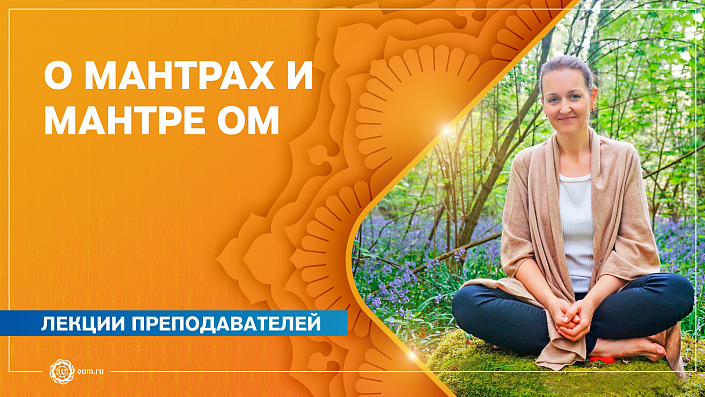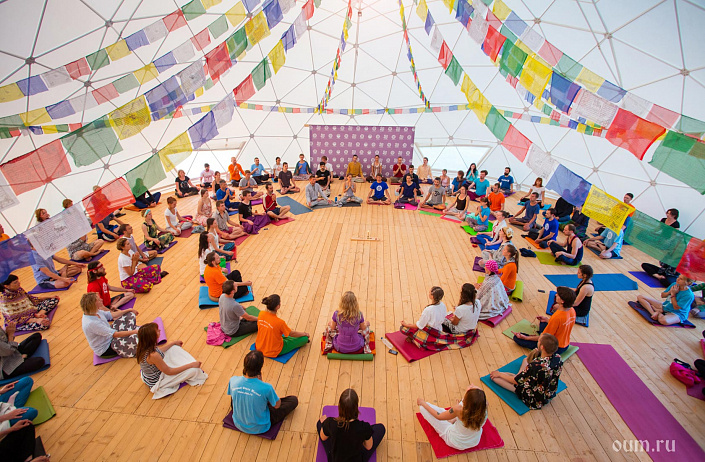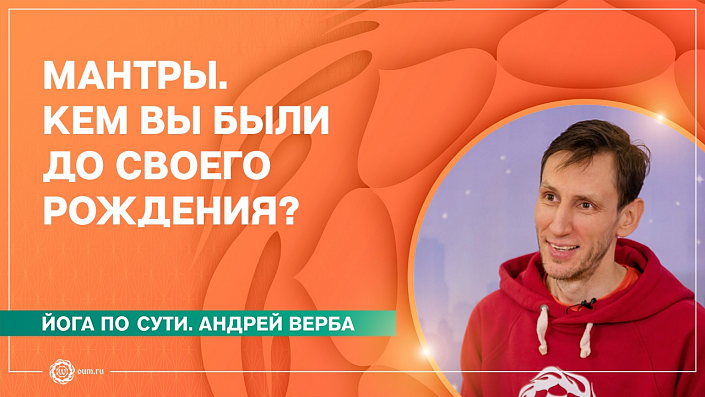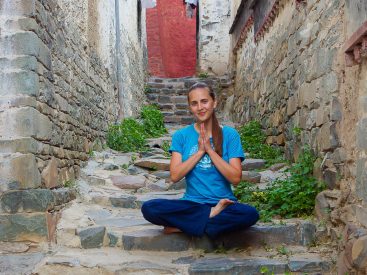FThe life of a modern person more and more often resembles a non-stop race. If earlier such a life concept was relevant for million-plus cities, now even a resident of a small city is doomed to an endless pursuit of an unattainable goal. Another misfortune of the modern world is “Groundhog Day”: waking up, a person, like a soulless puppet, performs a familiar ritual step by step. Even a day off becomes not an island of freedom, but a series of stresses in anticipation of a new work week. It seems that it is even more difficult to break out of this circle than from the wheel of samsara, but there is a way out and, like all ingenious things, it is very simple.
What is Japa Meditation? To whom can it be useful? Can an ancient practice change us and our lives? We will find answers to these and other questions together.
More than once or twice, coming to yoga, you heard how the teacher, along with the practitioners, sing the mantra “Om”, perhaps you yourself at first timidly and hesitantly tried to get into the “general note”. It is mantra that is the basis of japa meditation. Even the Universe originates from it, according to the Vedic concept.
Now a huge number of mantras are open to humanity, earlier this information was closed and passed from teacher to student. This continuity was not accidental. A mantra is not just a collection of incomprehensible sounds. Literally from Sanskrit, “mantra” is translated as a weapon for the mind.
The tireless repetition of mantras bestowed on practitioners not only the fulfillment of desires, but also enormous physical strength, individual mantras were able to materialize weapons and were available only to certain castes – kshatriyas, that is, warriors. At the same time, the mantra was also used to solve more mundane problems.
Today, as well as many years ago, hundreds of people accompany their requests to God with certain mantras. Many people believe that the practice of reciting mantras is self-indulgence, a fairy tale that has nothing to do with the realities of modern life. At the same time, scientists have proved more than once or twice that the vibrations arising from sound are capable of changing the space around them. The results of scientific research on the effect of sound on the structure of water are widely known. So, for example, under the influence of individual compositions, the structure of water was destroyed and lost its useful properties.
That is why only worthy disciples were allowed to repeat the mantras, those who would not use their strength for selfish purposes. “How are mantras and japa related?” The reader will ask a question. Japa in Sanskrit means “whisper” or “repeat”. It is the repetition, or more precisely, the whispering of mantras, that is the essence of japa meditation. Why whispering? It is believed that a mantra spoken in a quieter way has a much greater power than a mantra spoken publicly. It is believed that one who has attained perfection in japa does not recite mantras. By repeating them to himself, he achieves great success in his practice.
The main task of japa is to establish a connection between a person and higher forces, it is such a contact that lies at the heart of yoga and is its goal.
Many will be surprised, but for the practice of japa nothing is needed but a mantra and your desire. Japa meditation expresses yogic minimalism in its entirety. Many people use rosary for the practice of japa, which is also called japa-mala. Japa-mala – this is a rosary, as a rule, of 108 beads, a little less often a rosary with 54 or 27 beads is used. It is generally accepted that any mantra gains power if the practitioner recites it 108 times. This number of repetitions gives one circle, that is small. Of course, rosary beads will make the practice more convenient, but they are not vital.
The place is much more important. It all depends on the level of the practitioner. For one who has perfectly mastered the methods of japa yoga, there is no difference in the place of repetition. Thus, Swami Sivananda in his book Japa. Meditation on the sound of OM ”argued that you can repeat the mantra anywhere: at work or on the way home. The main thing is to focus your mind on correct pronunciation. Beginners who are just starting to recite mantras need a quiet and secluded place: in the first stages, everything around will distract your brain from repetition. However, this is how you can temper your mind, learn to tune in to the goal and achieve it.
What body position is needed during practice? As you can easily guessed, for experienced practitioners there is no difference in what position the body is, he can easily practice the repetition of the mantra while sitting and standing, as well as walking down the street.
For the one who picked up the rosary for the first time, it is necessary to use meditative asanas, even the “Turkish” pose, beloved by many, will do. When you have gained some experience in chanting mantras, you can try practicing, walking around the room.
But if you can somehow manage without beads, then it will be impossible to practice without a mantra.
Now, in the age of the Internet, you can easily find mantras for yourself, sometimes it comes to the point of absurdity: on the Internet you can find a mantra for anything, from a mosquito bite to protection from bad bosses. But the classic is the recitation of the sound “OM”.
In the Bhagavad-gita, Krishna says: “Of all sounds, I am the transcendental sound OM.” The Vedic scriptures claim that by chanting the mantra “Om”, the wise yogi pays homage to Brahma, Shiva and Vishnu. This makes the mantra more than universal.
Repetition of mantras does not require special physical skills; men and women of all ages can engage in this practice. We all experience the same feelings of grief, joy, we are alike, and this is what makes japa available to everyone.
Does this meditation have contraindications? Of course, there are:
- you can not use the practice of chanting mantras for selfish purposes;
- you cannot use the powers of a mantra to commit evil.
Morning is considered optimal for japa meditation. Some sources say that some mantras can be chanted only in the morning hours, others only at nightfall. The mantra “Om” can be recited at any time, but, if possible, it is worth starting the practice at 4:30 in the morning. It is generally accepted that in the morning hours the Universe is most sensitive, and the requests of a person will be heard faster.
Let’s go directly to practice.
- Get into any comfortable position and relax.
- Dim the lights or turn them off altogether.
- Concentrate your attention on the object of meditation, on the chosen mantra.
- Begin to turn over the rosary, repeating the chosen mantra.
- When you reach the large bead known as the Shiva bead, unfold the rosary and do another round of your practice.
- You can visualize a mantra by mentally drawing its lettering.
- Your mind should be completely focused on the mantra, you should not think about foreign objects and people.
- Many newbies ask what to do if lost? Sri Aurobindo said that if peace of mind is disturbed, one should stop, rest, and then start chanting the mantra again.
It is important to remember that you cannot abruptly quit the repetition of mantras, you, at least, must complete the circle you have already begun. Otherwise, you will not only lose the results achieved, but also incur the wrath of the Universe for showing disrespect.
There is no clear time limit, there are no sources that would say that you should read one circle in 10 minutes or in five. However, there are limits on the number of laps. They say that you need to repeat the mantra at least 10 rounds, but for beginners, this practice will be extremely difficult. It is recommended to start with one lap per day, adding one more lap every next week. When the number reaches 16, you need to control the quality of the chanting of the mantra with even greater attention.
For successful practice, it is worth remembering that:
- Japa does not like haste (the one who chatters hastily mantras, turning them into incoherent letters and syllables, will not be able to achieve success in practice);
- japa loves respect (find out more about the mantra you have chosen; before starting the practice, thank the teachers who passed on the mantra to people; do not throw the rosary on the floor and do not store it anywhere; everything, including such an instrument as a rosary, should have its own a place);
- you can only touch the rosary with your right hand (some sources say that you cannot even touch the rosary with your left hand);
- hands must be washed before practice (touching the rosary with dirty hands is a sign of disrespect for them);
- the index finger does not participate in fingering the rosary;
- you cannot practice naked.
As noted earlier, the benefits of chanting mantras are great. The most obvious benefit of japa is to calm the mind. Repeating the cherished words over and over again, the human brain connects with the forces of the Universe, external stimuli lose their power. What seemed like a global and terrible meeting yesterday at work is becoming a simple trifle, one of the tasks that can be easily dealt with. The practitioner seems to be growing over his problems, realizing the global meaning of his life. By practicing japa, we come to the search for ourselves and the purpose of our existence in life. Let’s understand that we are not work and cinema in the evenings, we are something more that has come into this world to solve important and necessary tasks, tasks that require strength.
Strength is another plus that we can get from the practice of reciting mantras. As already mentioned, japa connects a person with the Universe, and she willingly shares her strength and energy, filling us. And it only depends on us in what direction we will direct the received energy, we have everything to change the world for the better, and japa is a great option to feel this.
Japa will make us more focused. By practicing mantra recitation, we learn to concentrate all our attention on sound. Perhaps, there is no practice in yoga that allows one to develop in oneself a sense of concentration on any object just as qualitatively. This skill will come in handy in our daily life. We will learn to see the main thing, not to be distracted by trifles and, as a result, to bring what we started to the end.
We will take control of our mind and emotions. Indulging in asceticism, each time, picking up a rosary, we overcome our laziness, go through dozens of “I do not want”, we understand that only we can take control of our emotions. By controlling our mind, we can easily subordinate our emotions to our will, which means that we can become more calm and balanced. We will stop following our feelings, thereby making ourselves free.








